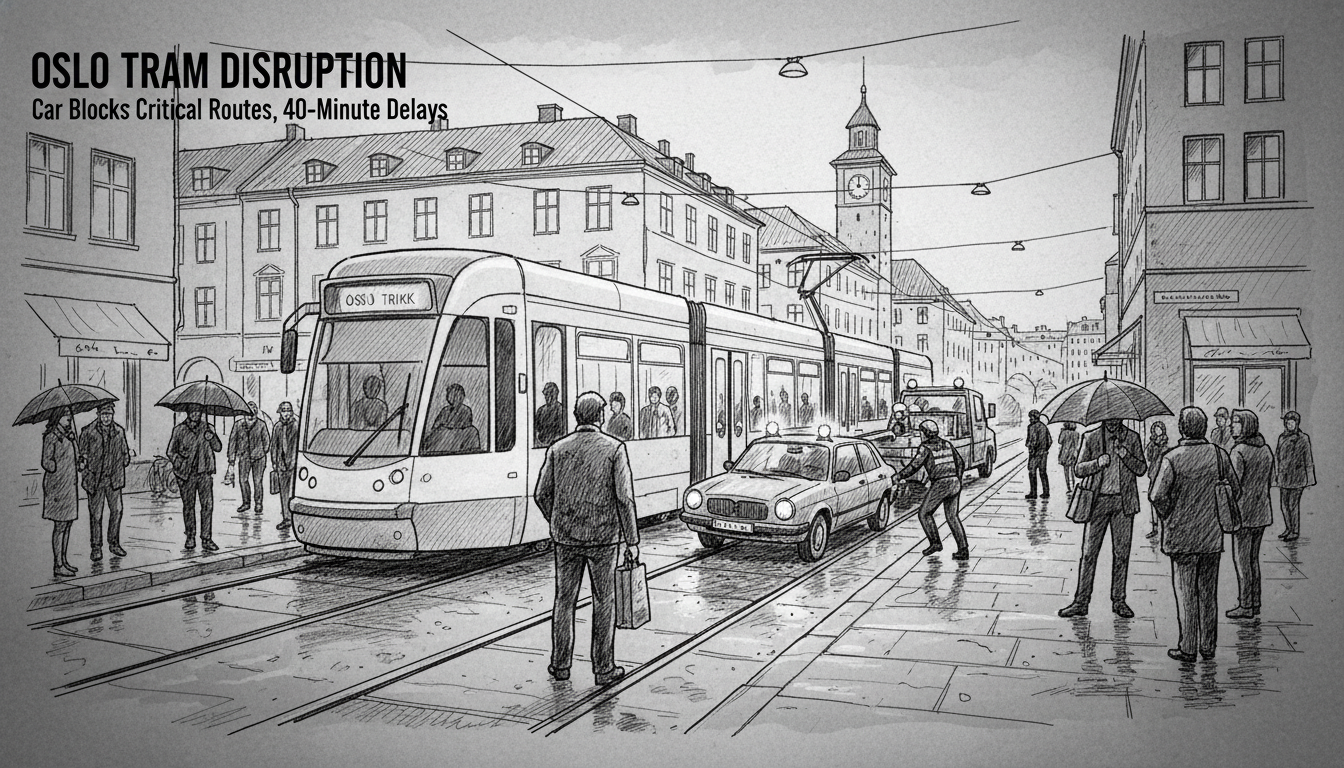Oslo's public transport network experienced significant disruptions when a private vehicle blocked tram tracks during evening rush hour. The incident affected routes 17, 18 and 19, with one tram immobilized for 40 minutes before emergency services could resolve the situation.
Transport authorities received notification of the blockage at 6:45 PM. Fire department commander Eirik Fredriksen described the scene. "A car had driven onto the tracks and become stuck, completely blocking the tram. People on site tried pushing the vehicle away but couldn't manage it. That's when we were contacted."
The Oslo Fire Department dispatched their rescue unit, which quickly moved the obstructing vehicle. The efficient response prevented more extensive service interruptions across the city's tram network.
This incident highlights ongoing challenges in Oslo's urban transportation infrastructure. The city has invested heavily in public transit to reduce congestion and emissions, yet private vehicles continue to interfere with dedicated tram corridors. Similar blockages have occurred previously along key routes like the Frogner Line and Sinsen Line.
Oslo's tram system carries approximately 130,000 daily passengers across 6 lines covering 131 kilometers of track. Service disruptions create ripple effects throughout the city's transportation network, particularly during peak travel times. The city's ambitious climate goals depend on reliable public transit to reduce private car usage.
Norwegian urban planning experts note that such incidents test the resilience of Oslo's integrated transport model. The city has removed nearly 700 parking spaces in recent years to prioritize public transit and cycling infrastructure. Yet conflicts between different transport modes persist in shared urban spaces.
The timing of this disruption during evening commute hours maximized passenger inconvenience. Route 19 serves critical connections between Majorstuen and Kjelsås, while routes 17 and 18 connect the city center with eastern suburbs. These lines form essential arteries in Oslo's public transportation system.
Transport authorities continue working on physical separation measures to prevent similar incidents. Oslo's ongoing city development plan includes more protected tram corridors and clearer signage at potential conflict points. The incident underscores the practical challenges of transitioning from car-centric to transit-oriented urban mobility.
Regular tram users expressed frustration with the disruption. Many noted that such incidents undermine confidence in public transportation reliability. This comes at a sensitive time for Oslo's climate transportation policies, which aim to make public transit the most attractive option for city mobility.
City officials acknowledge that infrastructure improvements take time while immediate solutions focus on faster response protocols. The fire department's efficient handling of this incident demonstrates improved coordination between emergency services and transport operators.
As Oslo continues its transformation toward sustainable urban mobility, balancing different transportation needs remains an ongoing challenge. Incidents like this car blockage test both infrastructure design and operational response capabilities.

